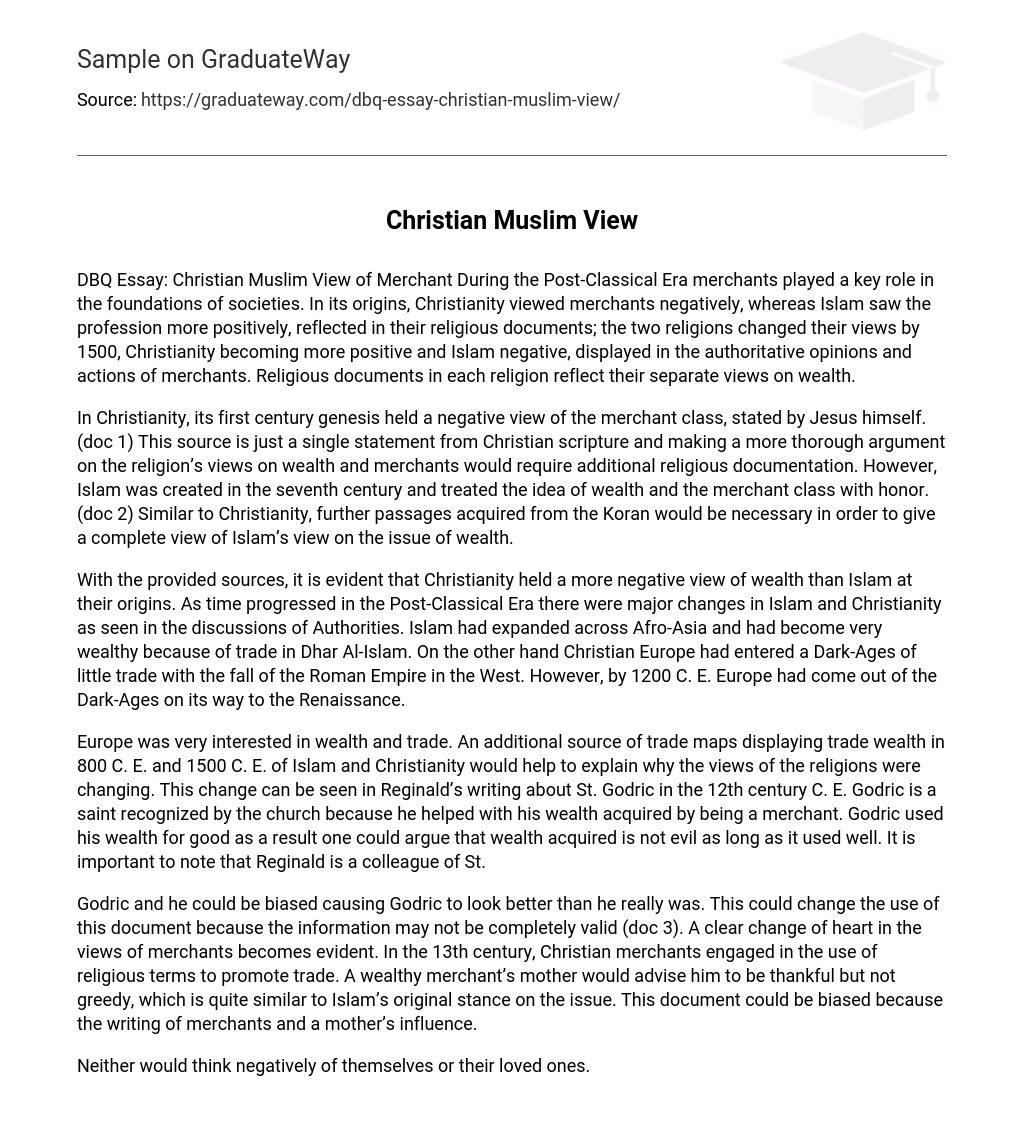During the Post-Classical Era merchants played a key role in the foundations of societies. In its origins, Christianity viewed merchants negatively, whereas Islam saw the profession more positively, reflected in their religious documents; the two religions changed their views by 1500, Christianity becoming more positive and Islam negative, displayed in the authoritative opinions and actions of merchants. Religious documents in each religion reflect their separate views on wealth.
In Christianity, its first century genesis held a negative view of the merchant class, stated by Jesus himself. (doc 1) This source is just a single statement from Christian scripture and making a more thorough argument on the religion’s views on wealth and merchants would require additional religious documentation. However, Islam was created in the seventh century and treated the idea of wealth and the merchant class with honor. (doc 2) Similar to Christianity, further passages acquired from the Koran would be necessary in order to give a complete view of Islam’s view on the issue of wealth.
With the provided sources, it is evident that Christianity held a more negative view of wealth than Islam at their origins. As time progressed in the Post-Classical Era there were major changes in Islam and Christianity as seen in the discussions of Authorities. Islam had expanded across Afro-Asia and had become very wealthy because of trade in Dhar Al-Islam. On the other hand Christian Europe had entered a Dark-Ages of little trade with the fall of the Roman Empire in the West. However, by 1200 C. E. Europe had come out of the Dark-Ages on its way to the Renaissance.
Europe was very interested in wealth and trade. An additional source of trade maps displaying trade wealth in 800 C. E. and 1500 C. E. of Islam and Christianity would help to explain why the views of the religions were changing. This change can be seen in Reginald’s writing about St. Godric in the 12th century C. E. Godric is a saint recognized by the church because he helped with his wealth acquired by being a merchant. Godric used his wealth for good as a result one could argue that wealth acquired is not evil as long as it used well.
It is important to note that Reginald is a colleague of St. Godric and he could be biased causing Godric to look better than he really was. This could change the use of this document because the information may not be completely valid (doc 3). A clear change of heart in the views of merchants becomes evident. In the 13th century, Christian merchants engaged in the use of religious terms to promote trade. A wealthy merchant’s mother would advise him to be thankful but not greedy, which is quite similar to Islam’s original stance on the issue. This document could be biased because the writing of merchants and a mother’s influence.
Neither would think negatively of themselves or their loved ones. This could exaggerate the Christian practice in merchants and trade (doc 6). To see if all merchants practiced Christianity to sanction their actions an additional source of merchant writings would be productive. It would be good to have multiple Islamic merchants’ writings than just in document 7. This could provide a clearer view of Islam’s merchant actions around the time of 1500 A. D. It is evident that Christianity became more congruent with Islam’s original view of the merchant class, and Islam to Christianity’s beginning opinions.





